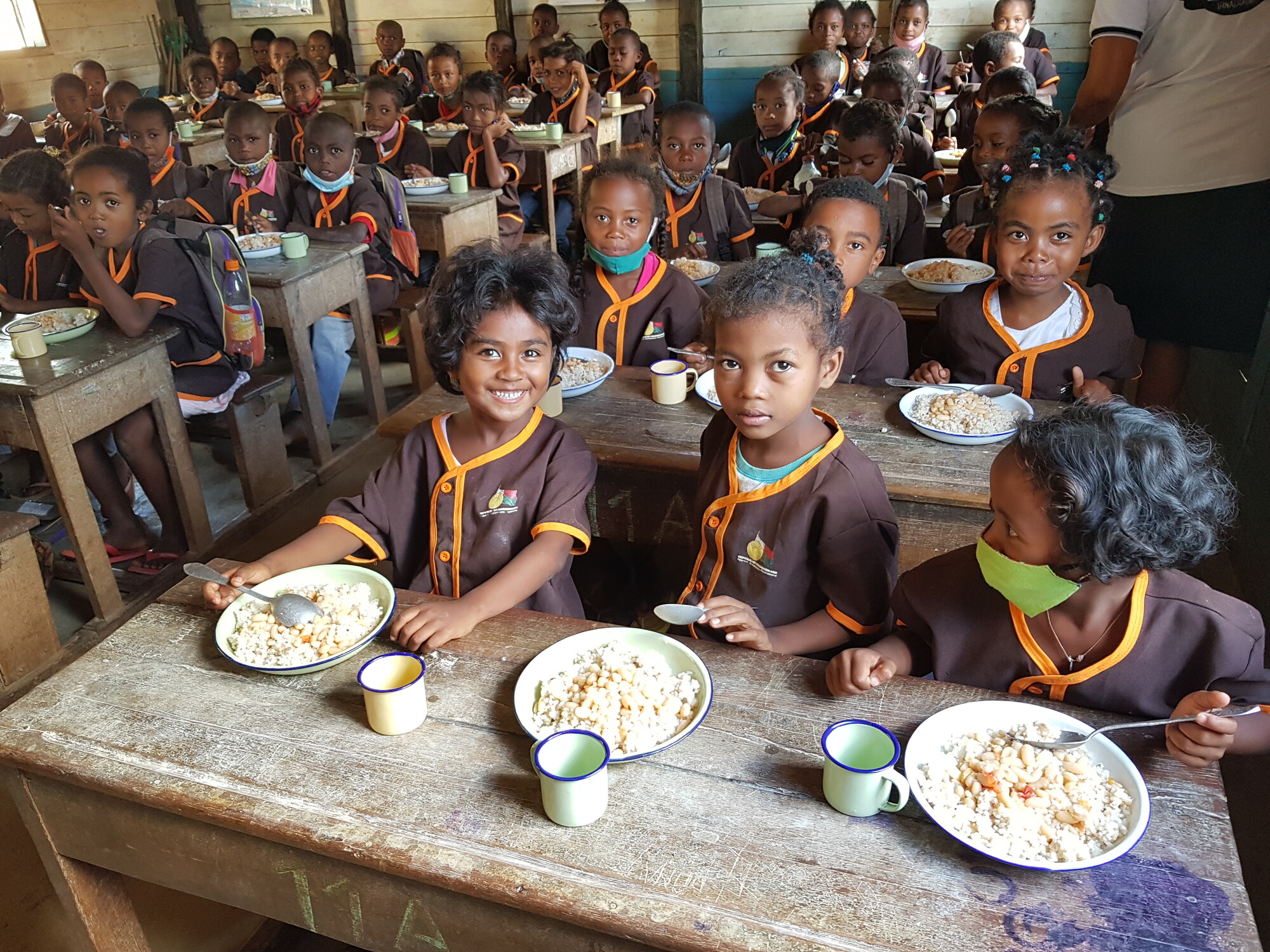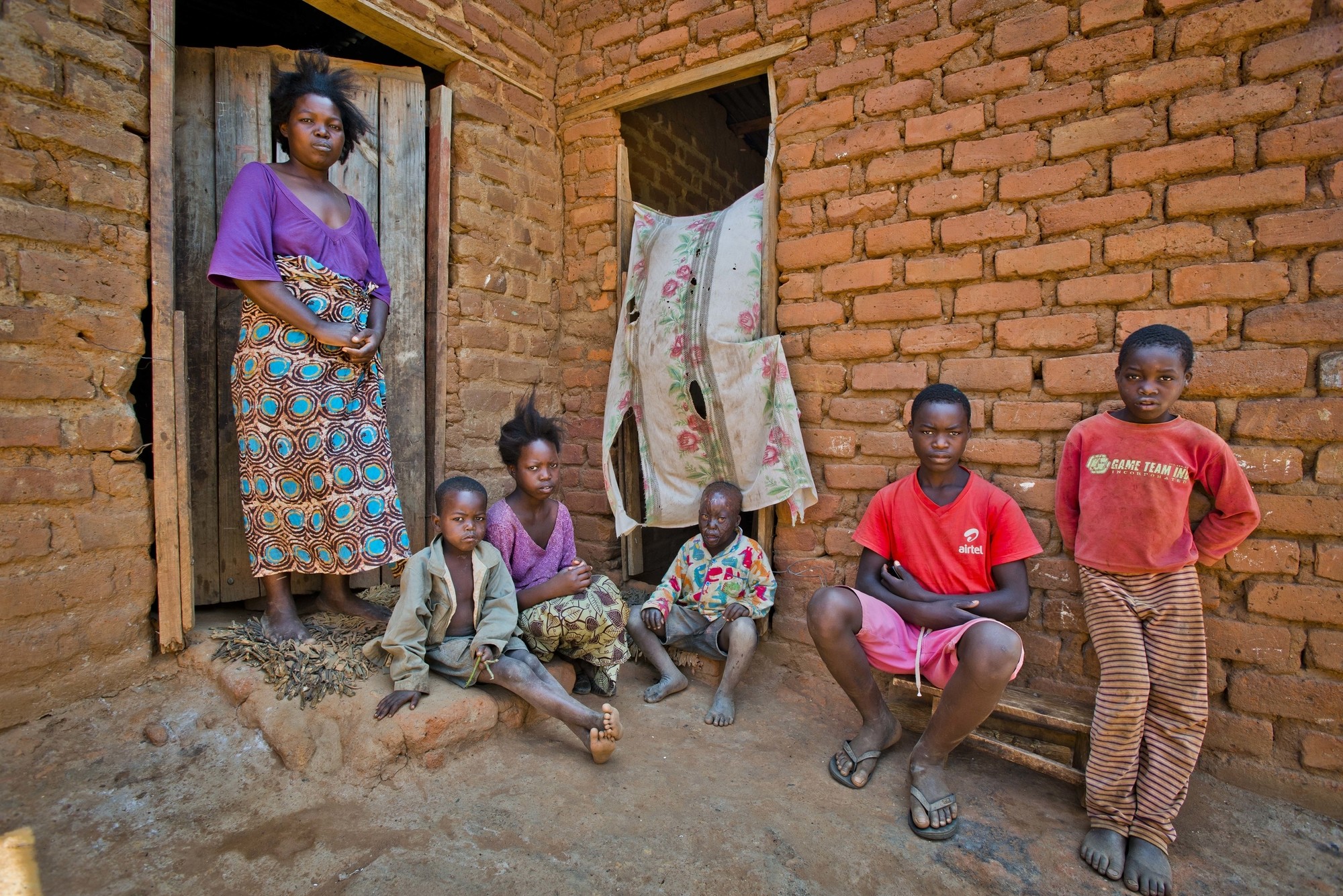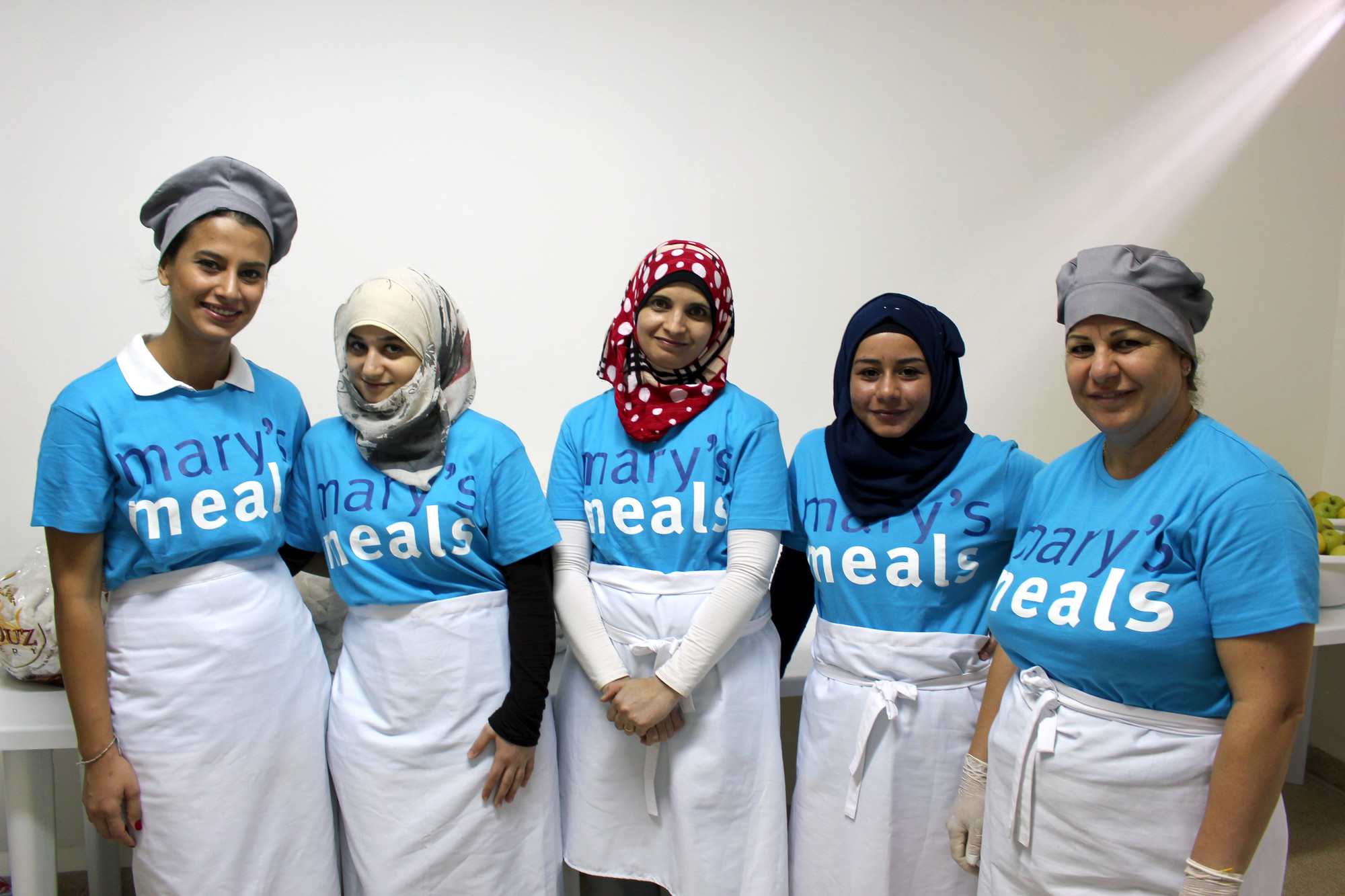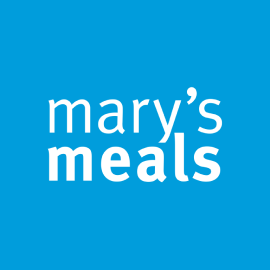The true impact of a plate of food from Mary’s Meals
Uncover some of the additional benefits of daily meals in school – for children, their families, and the communities that help to make the program happen.
For children experiencing extreme poverty and food insecurity, the benefits of a daily meal served consistently in their place of education may seem obvious. The fact that research has shown us that our meals help to reduce hunger and increase energy among children – as well as improving their happiness and alleviating anxiety – is a big part of the reason that we believe so wholeheartedly in our vision.
You may have heard us say ‘food changes the story’ for children living in poverty, and that’s not just because they can rely on our promise of a meal every day they attend school – it’s also down to the very fact that the meal is served in a place of learning.
There are so many communities where the day-to-day reality of life means that education simply cannot be a priority. Hunger and poverty are major barriers to learning – partly because children who should be in school often find themselves working or helping at home to ease the pressure on families to provide for them, and because it might feel like there is no point in sending them to school while they’re too hungry to concentrate.
Our most recent impact research found that (across four of our largest country programs) 83% of children reported that they feel ‘hungry’ or ‘very hungry’ before the meal, but this dropped to 3% after the meal. In the same study, 96% of children reported that they were able to concentrate ‘well’ or ‘very well’ after the meal.
It’s not surprising that we also see increased enrolment and attendance in schools where children are receiving Mary’s Meals, since learners – and their families – know they will receive a meal at school that will not only satisfy their hunger, but also help them to concentrate and participate in class.
The impact of these simple meals served in school reaches far beyond individual children and their own learning journeys, though. The positive ripple effect of our school feeding program is truly remarkable.
The ripple effect of school feeding
It’s very common for us to hear schoolchildren say positive things about the meal they receive from Mary’s Meals. For example, Marinah from Madagascar says: “We have lunch together in school, which is my favourite part of school. After eating at school, I am always full and strong, ready to start learning in the afternoon.” But it’s also clear that the benefit of these daily meals is felt by more than just the students who eat them.

Marinah’s father, a farmer having to navigate problems caused by recurring droughts in their area, says: “we rely on [the school feeding program] … it really helps us because even if it is drought season at least our children already eat at school so we just need to search [for] what we will eat at night. And even if there is enough rain (like during 2023) we have extra food that we can use for the next day. So, it reduces our costs and really eases our life.”
This sense of relief is commonly expressed by caregivers across our programs in different countries. Veronica, who is helping to deliver the Mary’s Meals program in Turkana, Kenya, says: “I am a volunteer cook with children receiving Mary’s Meals in this school, I was motivated by these young children, and I always come to cook for them.
"I have three children receiving Mary’s Meals. This has reduced my food budget at home because I only look for a meal for them in the evening and during weekends.”
In contexts where food is both scarce and expensive, the fact that our program can ease the burden on parents by reducing the number of meals they need to try to provide at home is truly life-changing. In a recent impact study in Kenya, before the introduction of Mary’s Meals, 22% of households worried about their children eating enough to stay healthy ‘most days’ or ‘always’. However, after children started receiving a daily meal in school, that reduced to only 4% of households worrying.
We were also able to verify (using our 2022 impact research along with community led focus group data collected in early 2023) that households with children attending schools where feeding is now taking place are able to redistribute their household spending, enabling them to buy more food for the entire family, and meet other needs.

One mother in Liberia told us: “Mary’s Meals’ school feeding program is helping me and my family to … cut back on expenses made on daily food. I am now able to spend money saved on household feeding cost to take care of school fees, health and other basic needs of my children and my home.”
Empowering, enhancing, and strengthening communities
The word community is synonymous with Mary’s Meals. It was community action that led to the creation of this work [and if you don’t know the amazing story of how this work began, it is beautifully told in our founder’s book, The Shed That Fed 2 Million Children], and community action plays a huge role in making our school feeding program possible today.
Communities areat the heart of Mary’s Meals. The work of cooking and serving meals for children is done by local volunteers from the communities around each school, and the wider global movement that helps to make the program possible – including awareness-raising and fundraising activities that enable Mary’s Meals to grow and flourish – are fuelled by the dedication and determination of communities that share our vision.
Many thousands of individuals are coming together to bring about positive change in their own communities and beyond, each playing their part within this united global movement. As well as the joy of helping to provide much-needed meals to children while they learn, communities and individuals involved in our work experience personal benefits as well.
We’ve heard of new friendships forming because of this work – mothers living in Lebanon as refugees from Syria coming together with their Lebanese neighbours to prepare meals for the program.

Rinda, a Lebanese volunteer, told us: “I’m not someone who has lots of free time. I give all my time for family. But when I started working volunteering in this program, I met people from different backgrounds, from Syria, from Lebanon. They are talking to each other, they are sharing their challenges to each other, they are listening and they are exchanging sometimes hints. I tell you something, you tell me something, it’s a lovely regular discussion that’s happening.”
As well as new friendships forming, we know that volunteers are learning new skills in their activities for Mary’s Meals, and finding new purpose and confidence as well as a sense of contributing to something bigger than their own needs or wants. While our focus remains on each individual child in the program and the importance of the meal they are served each school day, how wonderful it is to see that each plate has a reach way beyond each child’s hunger and that the impact of this program can be profoundly felt by siblings, parents, carers, whole communities, and individuals all over the world with their hearts set on a brighter future.
Just $31.70 feeds a child for a whole school year.
